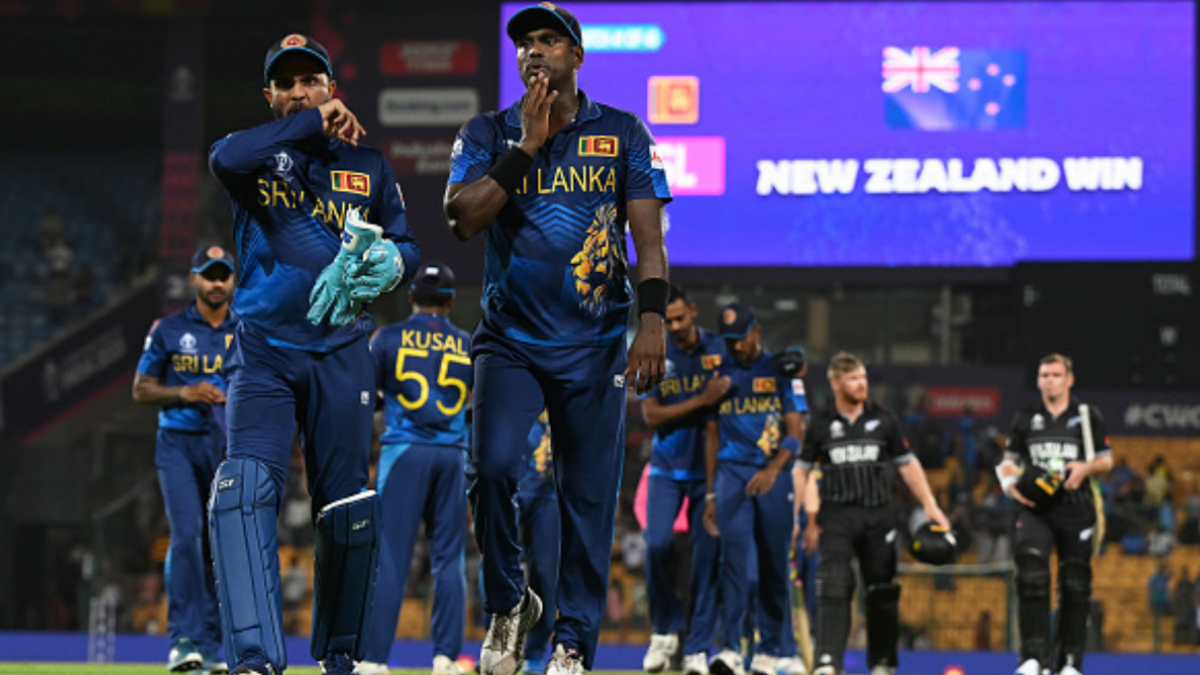
Sri Lanka fans desperately hold onto the occasional moments of magic, spread across months, but there were hardly any bright sparks in the 2023 World Cup.
To bet on the World Cup with our Match Centre Partners bet365 head here.
Sri Lanka look forward to a gloomy immediate future ahead following their suspension, with question marks over them hosting the 2024 Under-19 World Cup that is scheduled for January. As the ICC tries to figure out the terms of the suspension, Sri Lanka Cricket will be left waiting for the prize money from the World Cup as well, owed to them for winning two games in the competition.
They defeated the Netherlands and then England in the World Cup in successive games before ending with a five-match losing streak. While the win against England suggests it wasn’t all bleak, the defending champions weren’t as formidable usual either, winning only an additional game more.
The woes for Sri Lanka began right from the top. While Pathum Nissanka was one of their most consistent batters, making 332 runs at an average of 41.50, he is not a quick-scorer and he needed Kusal Perera to fire from the other end if Sri Lanka wanted to get flying starts. In the absence of Dasun Shanaka, Perera was the only big-hitter in the side, but he struggled, making 149 runs in seven games.
Only once did the opening stand yield more than 25 runs in the competition, giving opposition teams an easy inroad.
Much was also pinned on Kusal Mendis, who was Sri Lanka’s second-highest run-scorer in ODIs from 2022 till the World Cup began. He began with a quick 76, his knock against South Africa containing eight sixes before making 122 against Pakistan but the injury to Shanaka turned around his campaign as he was given the leadership duties for the first time. He could not cross 40 thereafter and averaged 13.71 in his last seven games, which also threw light on the lack of captaincy options heading into the future.
[breakout id=”0″][/breakout]
While Sadeera Samarawickrama and Charith Asalanka cemented their places and were arguably the biggest positives, the two rarely got going together. It often left either one with the sole responsibility of seeing off the innings and the lack of a finisher, with both Wanindu Hasaranga and Shanaka absent, worked against them. Sri Lanka only struck at 83.43 in the last ten overs of the innings, the worst among all sides. In contrast, each of the top four has a strike rate of more than 130 in the death, which highlights how crucial a big end to an innings is.
The lack of batting depth forced Sri Lanka to call up Angelo Mathews as an injury replacement midway, but while he repaid the trust with a lethal bowling spell against England, his helmet made bigger news in the remaining games.
Overall, Sri Lanka averaged 25.89 with the bat in the World Cup, the fourth-worst among all sides, with only Bangladesh, England and the Netherlands below them. They struck a mere 45 sixes in nine games and the failures with the bat meant they struggled to compete in batting-friendly conditions. Sri Lanka batted first five times, making 300 once, which was also chased down by Pakistan, but barring that game, lack of partnerships – they only had four hundred-plus stands in the competition – and the inability to build on the foundations set by the top order batters hurt them.
Bowling was expected to be Sri Lanka’s bigger strength but the team was sent at a disadvantage from the start with Hasaranga ruled out before the tournament. It left them reeling in the middle overs. Dilshan Madhushanka kept getting early wickets, picking up nine wickets in the first powerplay, the second-most by all bowlers but he had little backup. He grabbed 21 wickets but no other bowler could take more than eight. Mathews and Lahiru Kumara fired in one game each, but when it came to doing the same task again and again, Madhushanka was on his own.
The biggest drawback was also the form of the spinners, with the slower bowlers only picking up 11 scalps, the lowest among all sides. They averaged 78.85 and gave away runs at 6.07 runs an over, and the lack of penetration allowed sides to form partnerships even if they had been rattled early. Maheesh Theekshana missed his experienced partner Hasaranga while the expectations on Dunith Wellalage proved to be too heavy. Overall, Sri Lanka were the most expensive side in the tournament, giving 6.52 runs an over.
That combined with a catch efficiency rate of 61 percent at the start of the month, and it was an all-round insipid show. While a semi-final place was never expected, the lack of fight, which has now meant they will not play in the 2025 Champions Trophy, was often the bigger concern.
There still are positives to take from the side, with plenty of exciting young players and a solid core that could be the face of Sri Lanka for at least the next decade. Hasaranga was a big miss but flying home after wrapping up their worst men’s ODI World Cup was always going to have its consequences. As the government got involved and the dismal performance became a talking point in the parliament, the ICC acted on the alleged political intervention, slapping them with a suspension for the foreseeable future.
Sri Lankan cricket has been there before, in 2014, but at least the fans had a golden generation of cricketers still in their glory days to look forward to then. If only they had more to cling to this time.








